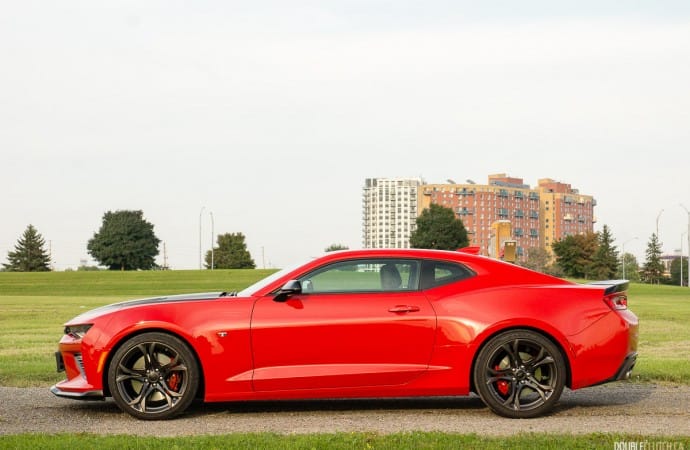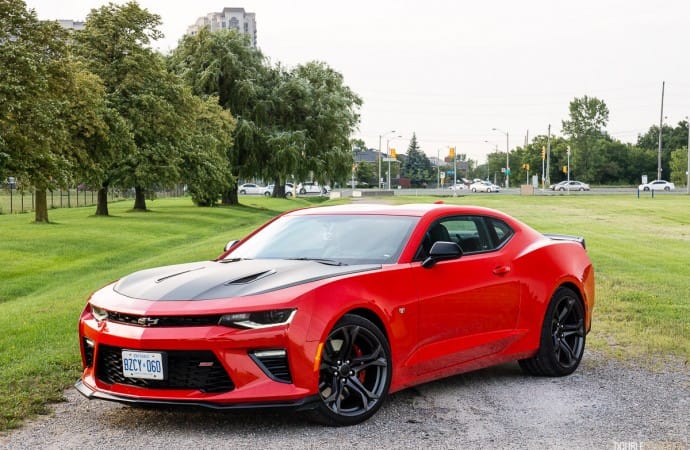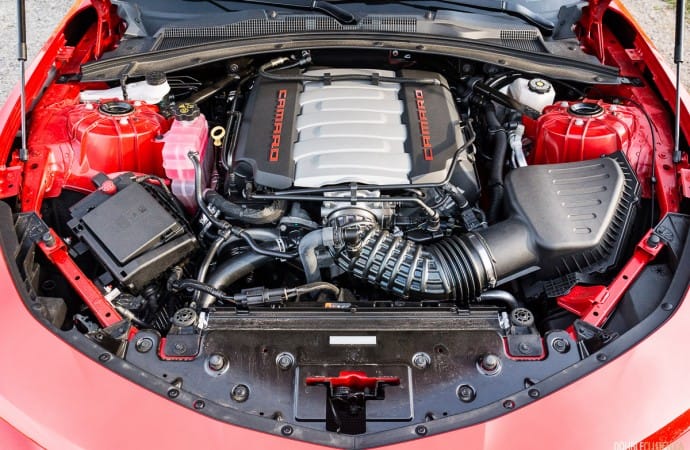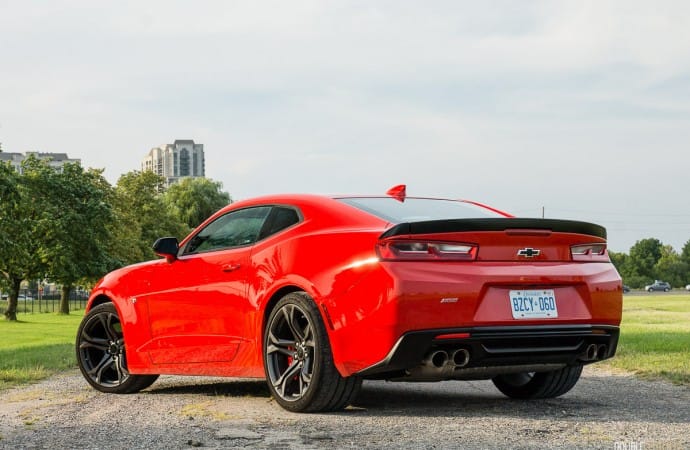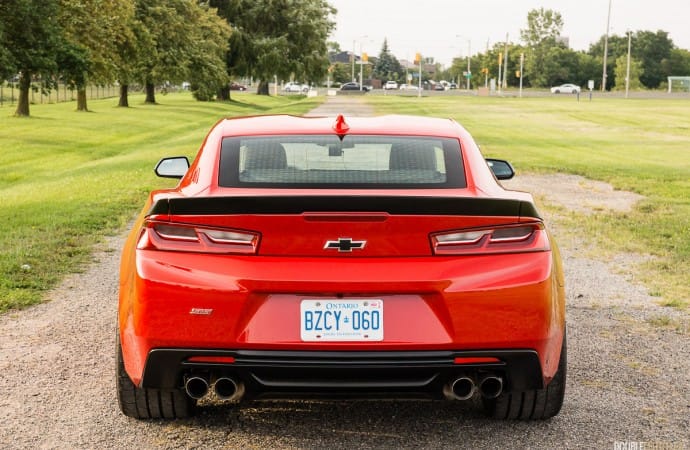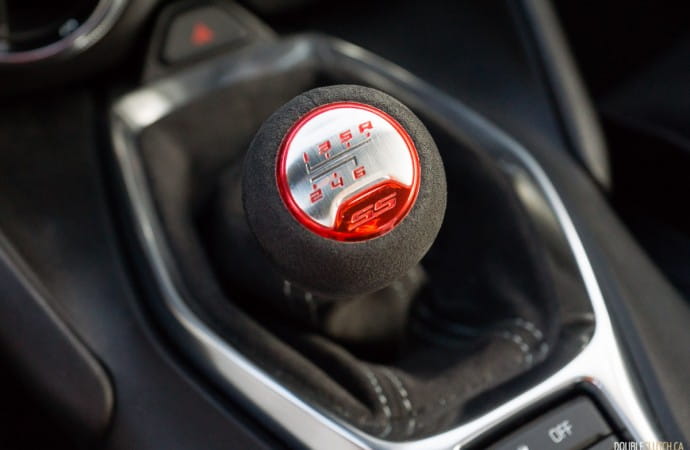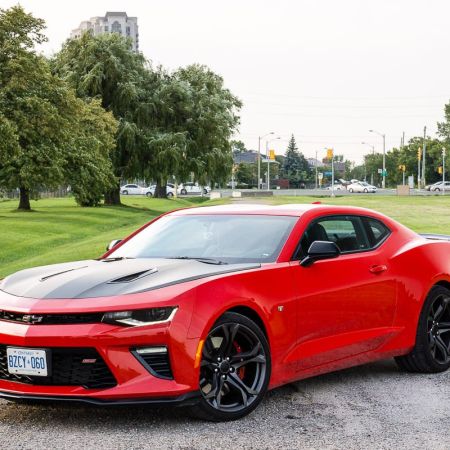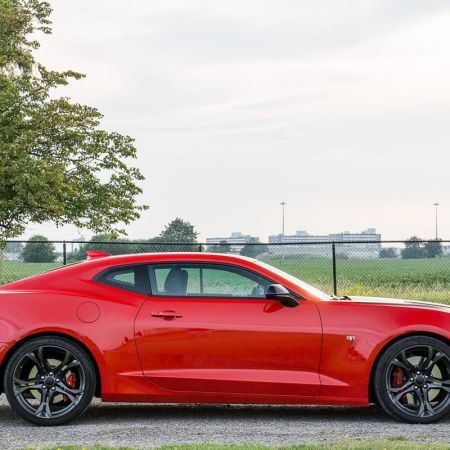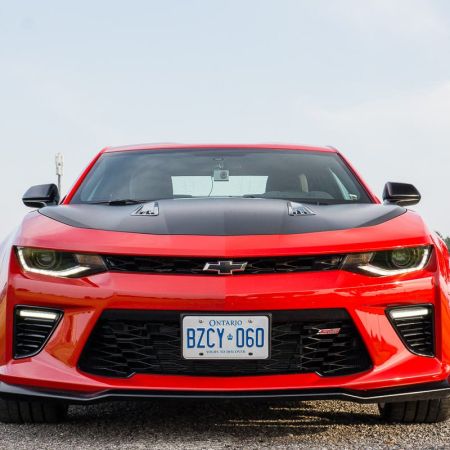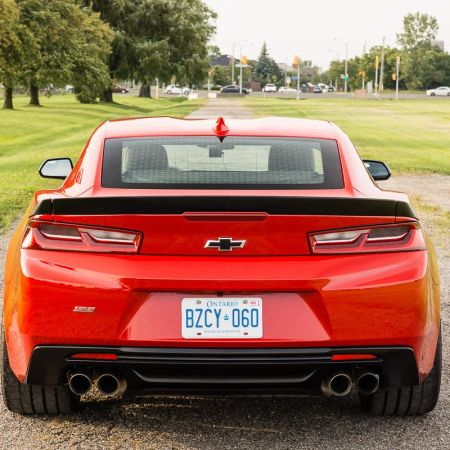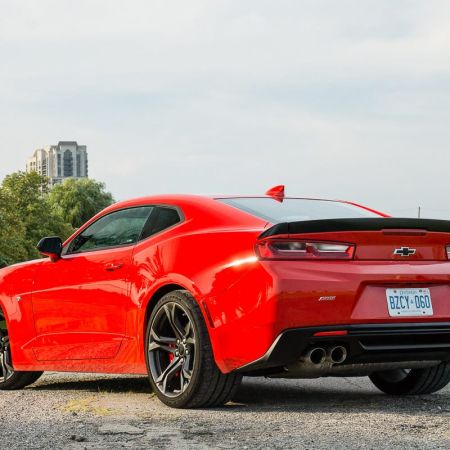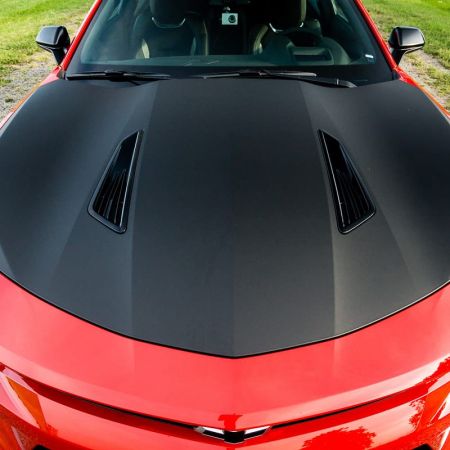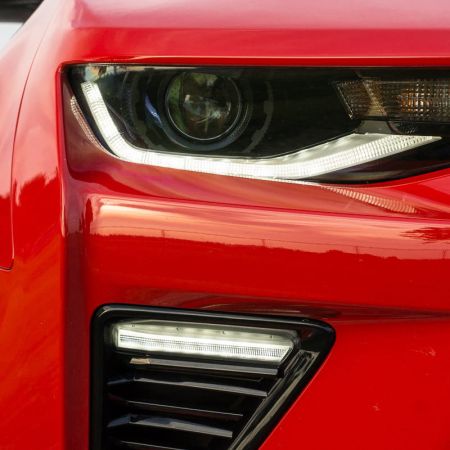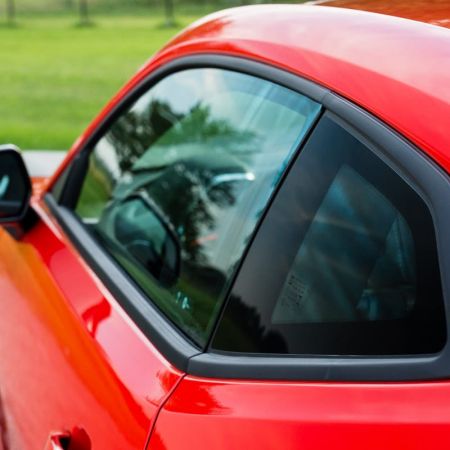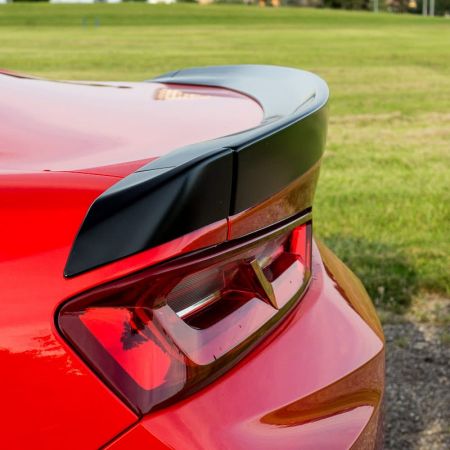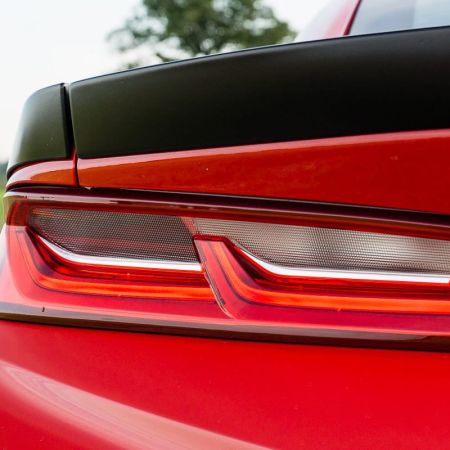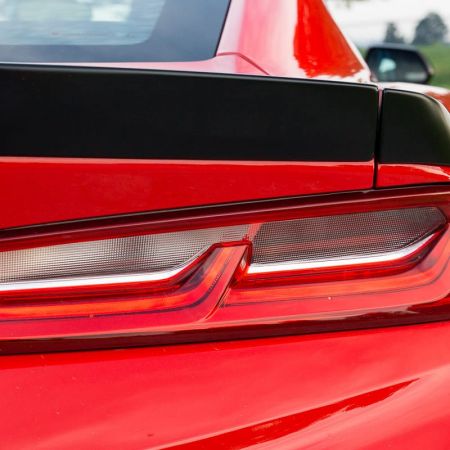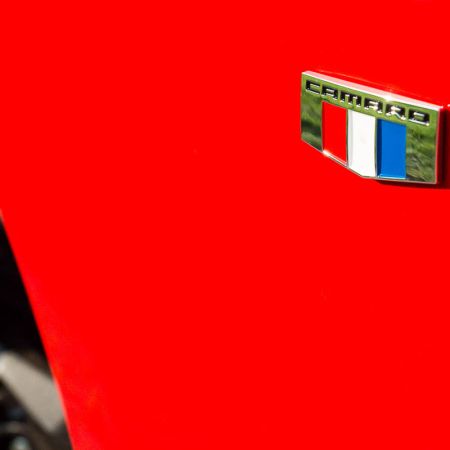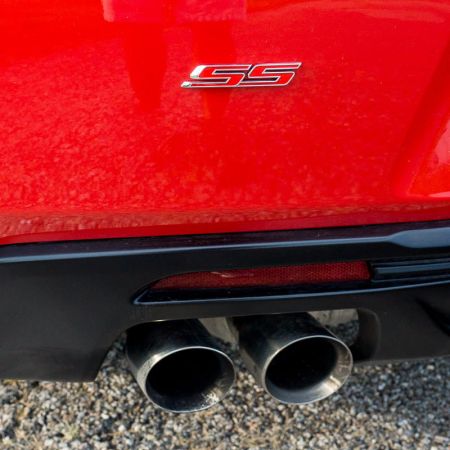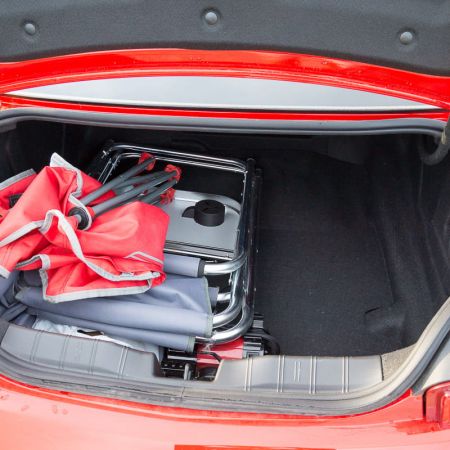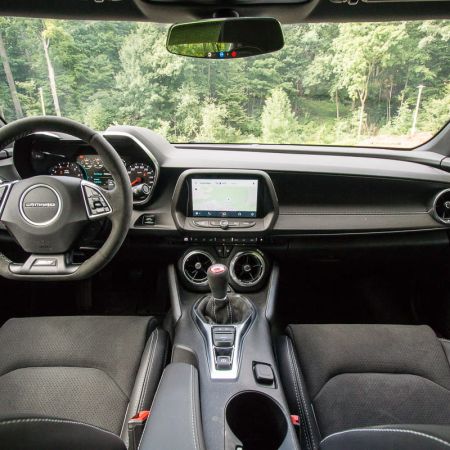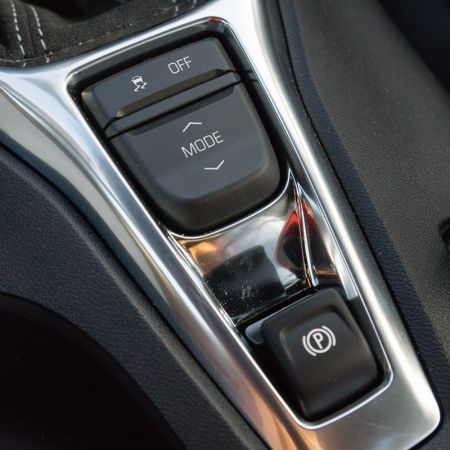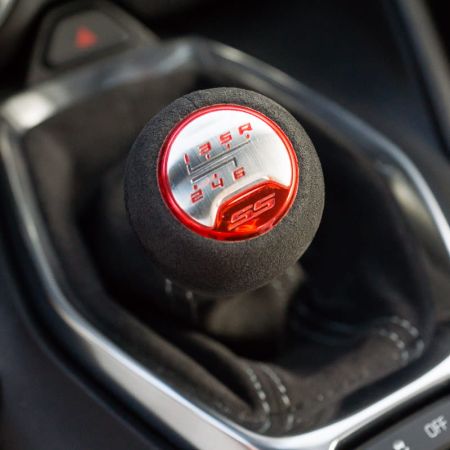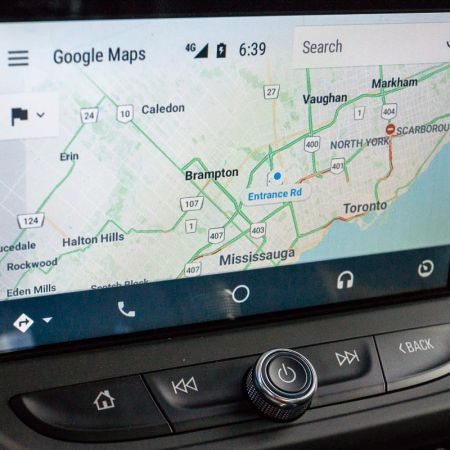In the DoubleClutch.ca offices, people know me to enjoy a certain type of driving: one that involves less horsepower, and more driver involvement. Cars that fit this sort of profile are often precision scalpels, with low curb weights and high agility, usually in conjunction with the modest power output from an equally modest engine. Good examples of these are the new Mazda MX-5, and Subaru’s BRZ. At the other end of the scale, exist sledgehammers designed to brute-force their way around the circuit. Now what if I told you that this sledgehammer could also dance with the best of them?
Chevrolet’s Camaro has, for a number of years now, left its “pony car” credentials behind; GM’s chassis engineers were finally allowed to do more than just build a straight-line drag racing car. It culminated in the enthusiast-special “1LE” package (faithful to GM’s cryptic RPO codes, as always), which promised legitimate hardware upgrades to make the Camaro a true “track ready” car, straight out of the box. We borrowed a “Red Hot” 2018 Camaro SS 1LE Coupe.
The Camaro has maintained its aesthetic and muscular look for two generations now. It’s not an unattractive car, with big haunches from the wide rear fender flares. High-intensity discharge headlights are standard, as are LED daytime running lights, and the 1LE package adds a flat-black hood. A mainstay of the fifth-generation Camaro (since 2010), the narrow bunker-thin windows was the main criticism of an otherwise solid sports car, and it’s time for that dead horse of poor visibility to get beaten once more.
Inside, the “Jet Black” interior remains a dark affair even during the day, no thanks to those small windows. Most of the driver’s touch points are wrapped in grippy suede, which feels nice, but will need to be regularly cleaned in order to maintain that “new car” feel. The steering wheel itself is of the flat-bottom variety, and features what first appear to be paddle shifters, even with the presence of a leather-wrapped six-speed manual transmission knob between the two front seats.
The eight-inch Chevy MyLink screen lives at the top of the centre stack, though the screen itself is canted downward at an angle that doesn’t quite seem very logical. The nifty climate control rings act as temperature controls, but the low-mounted vents take some getting used to. The multi-colour heads-up display in the driver’s line of sight is handy and features high resolution to provide fine details about engine status, speed, and rev-match system functionality.
Just aft of the gear selector, you’ve got quick access buttons for the different driving modes, as well as a small electric parking brake lever. Rear seat accommodation is tight, as one would expect. Headroom is certainly reduced compared to the Ford Mustang (reviewed here). The rear seat in the Camaro would be best as additional in-car storage space. Overall, the interior of the Camaro is functional, complete with the latest in smartphone integration, Recaro sport bucket seats with aggressive bolstering, and a comprehensive (mostly) digital instrument cluster that lets you keep tabs on all sorts of temperature readouts.
What makes the Camaro SS 1LE special is the go-fast hardware. There isn’t really any more power; the LT1 Chevy V8 still lives under the hood, displacing 6.2L. There’s variable valve timing and direct injection, which helps the brawny V8 make 455 horsepower at 6,000RPM and an equally impressive 455 lb-ft. of torque at 4,400RPM. There’s no complexity and lag of a turbocharger system here, and the instant response can really be felt, anywhere in the rev range. Power on the Camaro SS 1LE is routed exclusively through a Tremec-sourced six-speed manual (hence the reverse gear being to the right of fifth gear), to the rear wheels through an electronically-controlled limited-slip differential.
To further bolster the Camaro’s track capabilities and credentials, there’s a heavy-duty radiator, engine oil cooler, transmission fluid cooler, and even a rear differential cooler. All this stuff matters at the race track, where fluid temperatures can make or break your day. The matte-black front splitter is also claimed to help reduce high-speed lift, and better direct air towards the various radiators stuffed into the front-end.
Firmer spring rates and GM’s Magnetic Ride dampers are part of the performance suspension on the Camaro SS 1LE, as are the huge four-piston brakes at all four corners, supplied by Brembo. These monstrous brakes (complete with two-piece rotors at the front) live within a set of large 20-inch wheels, wrapped in 305-section Goodyear “Eagle F1 Supercar G: 2” tires, at all four corners. That’s right – there’s no front-to-back tire stagger here, for more neutral handling at the limit.
There’s a lot to like with the Camaro SS 1LE: a big and old-school, yet modern V8, manual transmission, rear-wheel drive, limited-slip differential, and literally all the cooling. What does it feel like behind the wheel? For starters, the issue of poor visibility never really goes away. Once you figure out a good seating position, you do get the impression that you’re behind the wheel of an immensely-capable high-speed road course car. Though weight has been reduced from the previous-generation Camaro (to the tune of about 90kg), this is still a heavy car that manages to deliver its own unique version of “agility” to the driver. I never got the chance to push the Camaro to its limits on a race track, but even handling some of my favourite highway loops, you get the feeling of massive mechanical grip from the massive tires, with excellent body control, thanks to the fancy Magnetic Ride dampers.
Even if you’re not pushing the car along at the race track, you can still enjoy the excellent V8 soundtrack, whenever you want. Thanks to the dual-mode performance exhaust, you can choose to either wake up the neighbours, or rudely wake up the neighbours. The Touring drive mode reduces some of the “bark” upon a cold start-up, but it’s still definitely there. As this isn’t an engine with turbos strapped to it, the exhaust stream (and all its accompanying aural volume) makes it to your ears, though there is definitely some synthetic engine sound enhancement going on. The Sport mode tightens up the steering weight, and firms up the dampers slightly, and the Track mode cranks those knobs a little more, and backs off the traction/stability control intervention points.
More on those “paddle shifters” behind the steering wheel: they are for quickly activating and de-activating the rev-match function. If you feel the need to get a little extra assistance with matching revs between gears, the Camaro will do it for you. The auto rev-match function even works on upshifts, holding engine speed at just the right place in order to ensure a smooth upshift, when you’re on the street. Purists will probably just end up skipping this feature (in order to nail their own heel-toe downshifts), but the good part is that this system is off by default every time you start the car.
Powered by a big 6.2L V8 under the hood, one shouldn’t expect stellar fuel efficiency ratings from such a car. GM rates the Camaro SS 1LE at 14.3L/100km in the city, 9.4L/100km on the highway, and 12.1L/100km in a combined cycle. During my week of mixed city and highway driving, I ended up with an indicated average of 13.1L/100km. The fuel tank will hold 72L of premium fuel.
The base Camaro, equipped with a 2.0L turbocharged four-cylinder engine, starts at a MSRP of $29,695 – you still get a limited-slip differential at that price! There’s also a 3.6L naturally-aspirated V6 in the middle of the range, but the V8 is the one you really want – of which there are two! The 6.2L naturally-aspirated 1SS ($43,745) has been the focus of this review, but there’s also a supercharged 6.2L V8, good for 650 horsepower in the ZL1. The 1LE “track handling” package, adds $8,495, which isn’t an insignificant value, but the long list of legitimate goodies is well worth considering. This Camaro 1SS Coupe with the 1LE package stickers at $52,240, as tested.
The Camaro’s archrival has always been the Ford Mustang, itself a formidable sports car, complete with track-focused handling package. The new $6,500 Performance Package 2 comes with a lot of similar go-faster hardware, but the Mustang has a very different overall feel, with its high-revving, four-cam, naturally-aspirated 5.0L V8. It is arguably the more modern car in many ways, and you don’t have to suffer with poor visibility. Configured similarly, both cars are only within a few thousand from one another. Nissan’s fully-loaded 370Z Nismo also fits the bill, but doesn’t come with eight-cylinder power. It is more affordable and delivers a lighter and slightly more precise feel.
The 2018 Chevrolet Camaro SS 1LE does have the real credentials and hardware needed to be a serious track day car, right out of the box. It’s still not possible to defy the laws of physics, and thus, the 1LE remains a sledgehammer complete with big power, big grip, and big speed. It has become optimized for effective high-speed attack, through sharper edges, better aerodynamics, and smart engineering to make the most of what is still viewed as a crude tool. The 1LE doesn’t change my views and preferences of driving a “slow car fast”, but it demonstrates what a car like this can be capable of, in the right hands. If only I was able to see out of it.
See Also:
2019 Ford Mustang GT Premium Convertible

